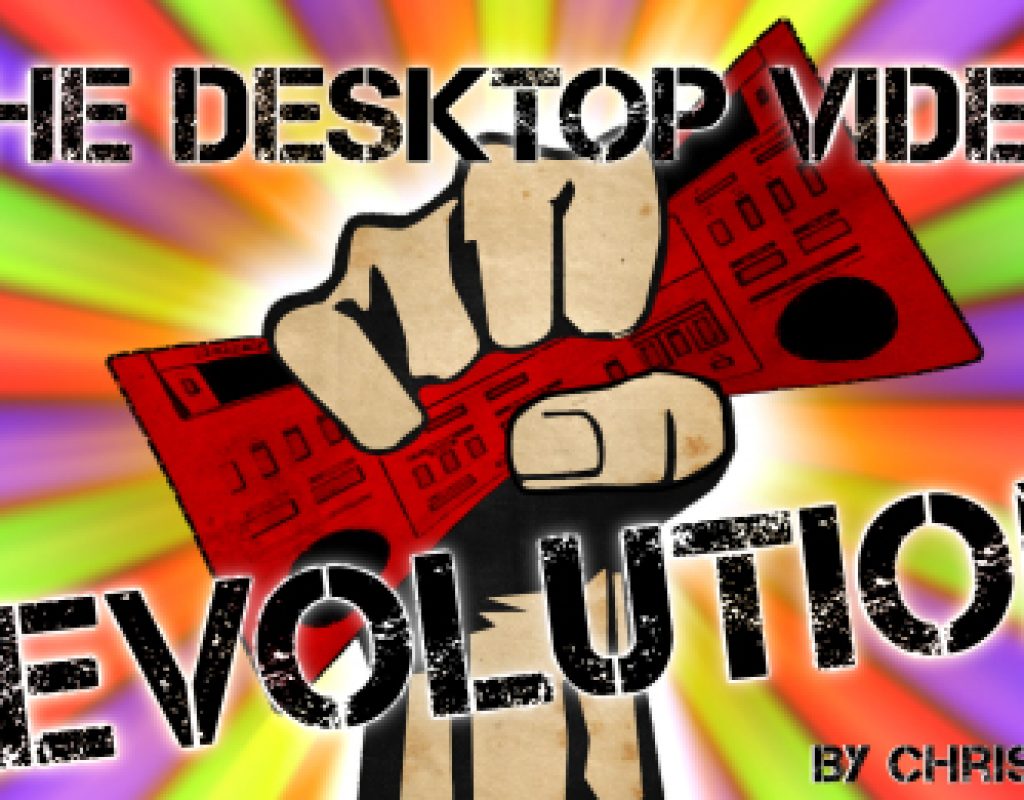The video production industry has radically changed over the past 20 years, a period of time that can be called “the desktop video revolution”. As desktop computers evolved to become faster and cheaper, they gradually displaced the traditionally expensive “black boxes” that had governed video productions over the previous decades.
This 3-part video presentation spans more than 16 years, which makes it something of an epic when compared to a normal After Effects tutorial!
In part 1, I introduce the concept of the desktop video revolution, and draw comparisons with the desktop publishing revolution of the 1980s.
In part 2, I deconstruct the production process used on the very first video project I worked on as a professional, and talk about the technology used at every stage of production. This is a snapshot of the latest and greatest production techniques available at the start of 1997.
In part 3, I deconstruct a TVC made in early 2013 – exactly 16 years after the production in part 2 – and compare the differences between the two projects.
In both cases we’re looking at “high end” TV commercials, made to the highest technical standards available at the time. However as desktop technology evolved over the period of time between the two productions, the workflows used are significantly different, and represent a “revolution” in video production.
Over the years I’ve bought many DVDs and Blu-Rays solely for the special features, and often I’ve watched all of the ‘making ofs’ before I get around to watching the actual film.
With older films, I often find it sobering to think that the iMac and software I have in my study is significantly more capable than the systems used in some of the greatest films ever made. I specifically remember watching “Dangerous Days”, the 3 hour doco on the making of Blade Runner, and realizing that the technique they used to create the city shots was what we now call 2½D – just layers of flat city shaped cutouts. What took a team of pioneering artists months to achieve in 1982 could now be replicated on a desktop computer by a single person.
Something else that I remember very clearly is the file our company kept for our Media 100 system. At the very front was the first quote they got, sometime in 1995 when they began to think about investing in a new non-linear system. In that first quote, the hard drives alone cost $18,000 for 18 gigabytes – or $1,000 a gigabyte. At the time, you needed special “AV rated” hard drives and you needed at least two of them, striped together as a RAID 0, using two separate ultra SCSI busses. By the time they actually decided to buy a system in 1996, the cost of the drives had halved – they ended up costing $9,000 for 18 gigabytes.
Right now I can buy a portable 2 terabyte hard drive for less than $100…
When discussing the evolution of technology over time, it’s natural to focus on the changes in price because they’re so dramatic. In these videos – especially part 3 – I make specific mention of how equipment costs have changed. But the difference in cost isn’t really the point of the videos, and although the prices I quote are as accurate as I recall them, I jump between US and Aussie dollars, and the exact definition of a turnkey system isn’t clear, so there’s room for debate. It didn’t help that Autodesk totally changed their prices as I was putting these videos together…
What’s really the point is how the capabilities unlocked by desktop software have changed the post-production workflows over the years. The number of separate companies involved in a major production has been reduced from eight (in 1997) to two (in 2013), and for less critical productions a single computer with a few apps is all that’s needed.
Technology and prices evolve over time, but as we’ll see in part 3 – when these evolutions totally change the way an entire industry works, we can rightly call it a revolution.
Click the full screen button for best results.
If you’ve enjoyed this series then please check out the other videos I’ve made for the ProVideo Coalition.
Here are a few links to related sites I mention during the videos:
Special thanks to Rotor Studios, Sydney, for providing the shot breakdowns.
FX guide provide plenty of information on the history of tracking.
They also have an illuminating interview with Autodesk, on exactly how they’re adapting to the desktop market. Just last year, Autodesk dropped the price of Smoke by more than $10,000 – proof that the revolution is continuing.
Quantel still exist, but their name is no longer uttered with the breathless wonder it once was.
Media 100 also exist as a branch of Boris FX, but it’s been years since I heard anyone else mention them.


